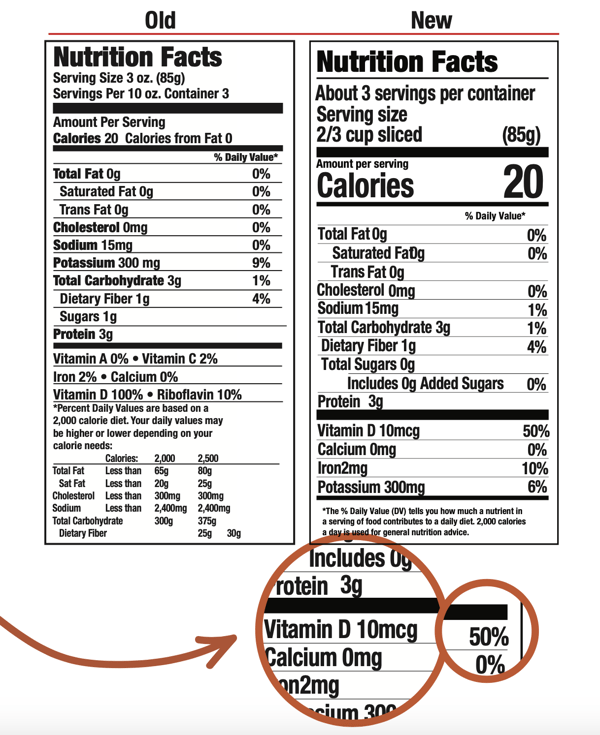Vitamin D is a highly impactful nutrient for people of all ages— and, boy, has it earned its incredible reputation.
This special vitamin has been linked to numerous health benefits, from enhancing the immune system to improving bone resilience. Vitamin D deficiency has been connected with ailments including multiple sclerosis, certain cancers, diabetes, etc., with new associations being discovered to this very day. That’s a real problem, as nearly 42% of Americans lack adequate vitamin D.
Instead of taking supplements or eating fortified foods, some prefer to receive vitamin D “naturally,” through their diet. But very few foods contain this nutrient, and not all mushrooms have an opportunity to produce vitamin D, as few are exposed to light when commercially grown.
Yes, some wild-harvested mushrooms contain high levels of vitamin D— but very FEW mushrooms available at grocery stores do. In this post, we’re here to explain why only certain fungi contain this coveted vitamin while others don’t, so that you can shop smarter and select the most nutrient-rich varieties at the grocery store.
Before we talk about how mushrooms become high in vitamin D, however, let’s take a moment to explain the two major types of this “sunshine” vitamin:
Vitamin D2 vs. Vitamin D3
There are two dietary types of vitamin D: Vitamin D2 (ergocalciferol) and Vitamin D3 (cholecalciferol).
To simplify, think of D2 as the form found in fungi, such as edible mushrooms (and some dietary supplements), and of D3 as the form primarily found in animal or algal sources (and also some dietary supplements).
Types of Natural Vitamin D
Vitamin D2(ergocalciferol) Found in specially labeled "High Vitamin D" mushrooms
|
Vitamin D3(cholecalciferol) Found in animal and algal/lichen sources
|
In this post, we’re focused solely on vitamin D2, and how it’s produced by mushrooms under the right conditions. Both are important forms of vitamin D, but vegetarians and vegans in particular can get all the whole-food vitamin D they need exclusively from D2, thereby avoiding animal-based, extracted, and synthetic sources.
“It used to be thought that D2 was less potent and bioavailable in the body than D3,” according to Berkeley Wellness. However, a number of reputable studies ”comparing D2 from mushrooms with D3 from supplements… found that D2 is as effective as D3 in boosting the biologically active form of the vitamin in the body.”
Unfortunately, there’s a huge lack of vitamin D in produce aisles. In fact, mushrooms are the only significant source of vitamin D in the produce department, as no other fruits and vegetables contain enough of the nutrient to be considered beneficial.
But not all mushrooms contain vitamin D, only those that were exposed to sunlight or ultraviolet prior to packing.
The Importance of Ultraviolet Sunlight
Humans produce vitamin D when the sun’s rays touch our skin. Unlike other fruits and vegetables, the penetrable tissue of mushrooms respond to light similarly to the way people do: by increasing vitamin D content when exposed to sunlight.
Unfortunately, most commercially grown mushrooms are grown in the dark and, thereby, lack vitamin D.
Even when grown in lit conditions, not just any form of light will cause mushroom tissue to produce vitamin D. Only certain growers— specifically our team at Monterey Mushrooms— utilize the power of ultraviolet light, therefore, producing vitamin D-rich mushrooms.
We care about the nutritional profile of our fungi enough to team up with the U.S. Department of Agriculture to replicate vitamin D-rich light indoors. This “sunlight” is a specially devised proprietary ultraviolet light. We never use additives, supplements or chemicals to manipulate the nutrition of our mushrooms. In fact, our research with the USDA confirmed that the nutrients in the mushrooms remains the same as for non-D mushrooms, with the only difference being that some of the mushrooms’ vitamin D previtamin has been converted into vitamin D.
Be sure to check your mushroom packaging to find fungi containing this important nutrient.
How to Check if Mushrooms Contain Vitamin D
Because not all commercially grown mushrooms contain vitamin D, it’s important to review the Nutrition Facts Panel on your fungi’s packaging to check for its amount per serving of the sunshine vitamin.
As of January 2020, U.S. Food and Drug Administration’s labeling requirements now mandate that vitamin D be listed in the Nutrition Facts Panel.

Now every label will list “the actual amount (in micrograms) in addition to the % DV” of vitamin D.
When reading the label of mushrooms in the grocery story, look for mushrooms showing 10 mcg or more of vitamin D.
Where to Find High Vitamin D Mushrooms
Many find themselves reading nutritional panel after nutritional panel, trying to find fresh mushrooms with vitamin D. Unfortunately, not all grocers stock High Vitamin D mushrooms.
Here are a few of the fine retailers who currently carry our High Vitamin D mushrooms. You can click to see, state by state, which grocery stores stock our nutritious fungi.
Learn More About the Power of Vitamin D
Curious to learn more about the nutritional profile of mushrooms and the astonishing benefits of vitamin D?
Download our Free Everything You Need to Know About Vitamin D & Mushrooms ebook. We’ll discuss other important nutrients mushrooms contain, such as selenium, fiber and B-vitamins, and expand on more ways the sunshine vitamin can improve your health.







